Frankenstein: the True Story 1973
“My journey had been my own suggestion, and Elizabeth therefore acquiesced, but she was filled with disquiet at the idea of my suffering, away from her, the inroads of misery and grief. It had been her care which provided me a companion in Clerval—and yet a man is blind to a thousand minute circumstances which call forth a woman’s sedulous attention.” – Mary Shelley, Frankenstein.
“Victor, you and I are almost strangers. But I can read your heart. I know we can work together! As you so, I’m subject to these wretched weaknesses. I’m helpless without your strength.” — Henry Clerval, Frankenstein: the True Story.
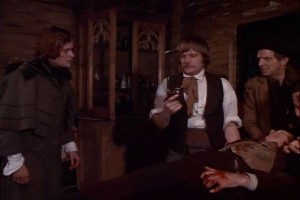
Way back in the early 1980s, my grandmother was looking after me one evening. I can’t quite remember why – I think my Mum might have been unwell, but I’m not sure. But my Nan — who could be gloriously irresponsible when she wanted to — let me stay up to watch what she was watching: Frankenstein: The True Story. It wasn’t really suitable for a small child, but I thank her anyway.
It was the first time I ever saw a real grown up horror movie. I knew about the Frankenstein Monster from TV – from the Groovie Goulies, and the Munsters and what have you, and I had the idea that there was a story behind the character but I had no idea what it was. When Nan let me watch something not only called Frankenstein, but The True Story, I couldn’t have been keener if I’d been taking notes.
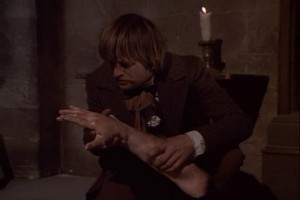
When I saw the True Story again a few years ago, in my late thirties. I found that I remembered every horror moment beat for beat. Every death, every murder, every unnatural resurrection, every grasping disembodied limb. But there was a lot I didn’t remember. There was an awful lot of slow, talky scenes as well which obviously hadn’t interested me very much as a child. But every bit of gruesome terror had stuck in my mind.
As an adult I noticed two things about the movie that I hadn’t noticed as a child. Firstly, it was surprisingly well written for a 1970s telemovie (yes, a prestige telemovie, but still…) Secondly, it was very, very gay.
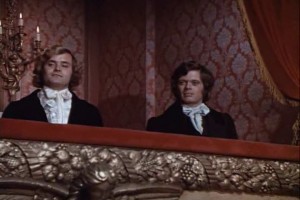
By that, I don’t mean camp. It’s not the Rocky Horror Show by any means. It is all played very seriously. What I mean is, there’s this very deep, and not at all well-hidden theme concerning gay male relationships.
Apparently, earlier versions of this film had a different beginning, based around Byron, Dr Polidori, Percy and Mary Shelley. But my video copy starts with a weird intro where James Mason just delivers spoilers direct to camera. I’d skip this if I were you. Then we get to Victor Frankenstein (Leonard Whiting). Victor’s brother drowns while boating. Rather than becoming a campaigner for more vigorous life jacket laws in Switzerland, Victor decides that he’s the enemy of death, and that he can create life. His fiancé, Elizabeth (Nicola Paget) says that he and she could create life themselves, as soon as they are married. Victor dismisses this as an irrelevance.
This is when I started wondering about Victor.
Victor returns to the hospital where he studies, and falls in with eccentric surgeon Henry Clerval (David MacCallum). Henry steals amputated limbs, and is working on reanimating deceased creatures with electricity. He also straight up says that he doesn’t get on with women. The two of them become good pals, sharing a hobby, a flat in town and in their free time they do some DIY on a place in the country.
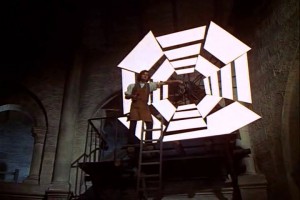
At this point, I’m scratching my head. Then Henry’s abusive ex-science colleague turns up in the form of Dr Polidori (James Mason), and I go to the IMdB. And what do you know? The movie was written by Christopher Isherwood and Don Bachardy. Now I accept that I’m not just reading things into the story, and I can go on enjoying the film
Elizabeth turns up at the boys’ flat, and Victor tries to impress her by reanimating a butterfly. Henry is unhappy at having his secrets revealed to a girl and Victor tries to placate him. Meanwhile, Elizabeth freaks out over the butterfly and squashes it with the first object that comes to hand – a bible. The symbolism couldn’t be much more obvious if it had the word ‘SYMBOLISM!’ written on it in glowing letters.
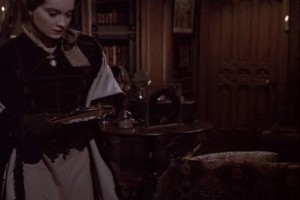
An accident at the local quarry creates a bunch of partially intact corpses for Henry and Victor. The scene where the select appropriate parts from which to build their monster is played very seriously, but taken out of context the dialogue could come from a couple of old queens on Oxford St. ‘This one’s arms, but not his legs… That one’s chest, but it might need a little work done. That one has a nice head — pity about the brain.’
The creature is built. However, the night before the reanimation is to commence, Henry discovers that the process is unstable and that resurrected life will begin to decay. Before he can tell Victor, he has a heart attack and dies. Victor arrives in the morning to find his friend dead and buries him with great solemnity.
Ha ha, just kidding. He takes Henry’s brain and puts it in the Monster. The Monster is brought to life, using a very cool looking solar generator rather than the traditional lightning. The Monster rises, Victor proclaims that he is beautiful, and the two go out to the opera together. Yes, really.
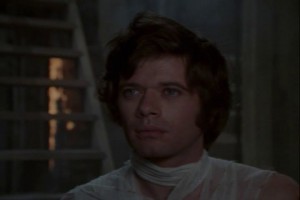
Actually the Monster is pretty easy on the eyes. It learns quickly, and Victor teaches it table manners and general etiquette. However, Victor soon notices the beginnings of decay. Could his beautiful young protégé be aging?
It might be worth noting here that not only were the writers of this film lovers, but Bachardy was thirty years younger than Isherwood. It’s awkward to be thinking about the internal dynamics of the relationships of people I don’t know and will never meet, but still it’s hard not to wonder how many of the fears and tensions of this May/December relationship made it to the screen.
The Monster is indeed becoming more, well, monstrous looking. Victor destroys all of his mirrors, so that the Monster won’t see himself, but can’t find a way to cure the regression. While Victor seeks help from an unsympathetic clergyman , the Monster accidentally scares Victor’s landlady (Agnes Moorehead) to death. Victor takes his creation back to the lab in which he was made. Victor contemplates destroying the Monster with acid, but can’t bring himself to do it.

The Monster finds a fragment of mirror. Horrified at his appearance, he attempts to stab himself, but is too tough to die. He runs off to jump over the nearest cliff. Victor chases him, leading to one of the most sadly touching scenes in any Frankenstein movie. Victor nearly catches up with the Monster, telling him to stop. The Monster stops, turns silently, and looks expectantly at Victor.
‘Go on,’ he seems to say. ‘Tell me why I shouldn’t jump.’
Victor just stands there, unable to think of an answer to this unspoken question. Disgusted, the Monster turns and leaps into the sea. End of part one.
The idea of Frankenstein as a queer story isn’t new. Bluntly, one of the things it’s about is men performing the reproductive act without the assistance of women. Isherwood and Bachardy take this line of reasoning and run with it, probably further than any other film adaption of Frankenstein (Yes, yes. There’s Rocky Horror, but that’s more pastiche than adaptation.) Having said that, True Story was written for prime time television in the early 1970s. Someone not interested in the queer interpretation could happily ignore it completely and take the whole thing at face value. I doubt my Nan thought it was a queer movie, and I certainly didn’t at the age of eight.
Now, I don’t want it to sound like what the writers were doing was some sort of mere exercise cleverness. It’s a damn good horror story as well. Lots of lovely mad scientist ranting from Henry, and all sorts little shocks and chills — cool enough for me to remember after thirty years. The scene where Elizabeth is menaced by the butterfly is particularly interesting, sitting on a razor-thin balance between ‘eerie’ and ‘ridiculous’ and just avoiding falling over. Horror movies are often metaphors for something — but good horror movies are also scary and the makers of Frankenstein: The True Story do not forget that.
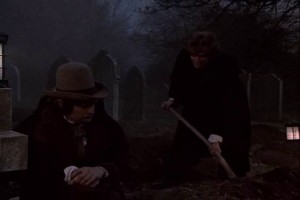
I’ll talk a little more about Polidori in Part Two, but the role of Henry Clerval is interesting here. Henry, in the novel, is a friend of Victor’s who is studying languages at the same university where Victor studies medicine. He rarely has a part in Frankenstein movies, but here he plays a critical role, both as Victor’s mentor and as the brain-donor for the Monster. In this version, Victor is played more like the novel version of Frankenstein than the usual film version of Frankenstein. He’s less ranty, more uncertain and tends to react to problems rather than try to get ahead of them. Thus, the shouty, ranty mad scientist role is passed to Clerval this episode and Polidori next episode. And damn, but David MacCallum does a great mad scientist. In fact, any film with David MacCallum and James Mason as rival mad scientists has to have something going for it, and it’s a pity they don’t have more scenes together.
The sets and costumes are lovely, and the makeup on the Monster as he gradually becomes more Frankensteinesque is really well done. If I have a complaint, though, it’s the music. It’s just generic ’70s telemovie theme music, but it seems cheap compared with the obvious effort put into production standards elsewhere.
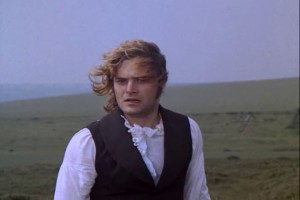
I’ll look at the (altogether stranger) Part Two, next week, with some more thoughts on the whole of the enterprise.



